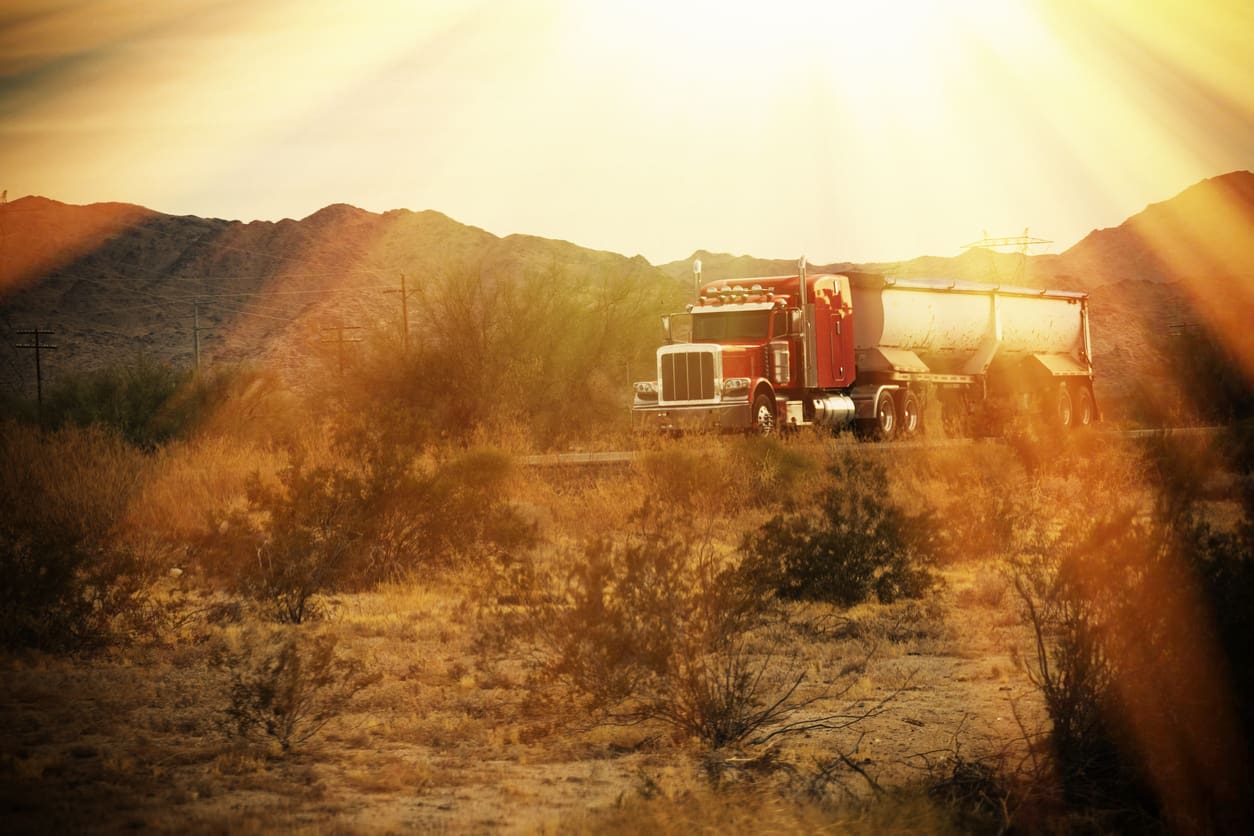Tips for Driving Safely in Extreme Heat

U.S. roads, highways, and interstate systems are home to their fair share of large commercial trucks. Available data show that the roughly 15 million commercial trucks registered in the U.S. play a part in transporting approximately 72% of the freight businesses and everyday individuals rely on. To put into context just how much freight is being moved by these trucks, we need only look at a study published by truckinfo.net, which found that large trucks had a hand in transporting over 13 billion tons of freight, everything from clothing and groceries to building materials and hazardous waste, across the U.S. this year alone.
Why the Trucking Industry Shows No Signs of Slowing Down
In helping individuals and businesses move and receive the products they need, the trucking industry makes a lot of money, which explains why it will be around for a while. In 2022, the U.S. transportation industry had a $1.16 trillion valuation, with trucking companies accounting for over $940 billion of that valuation. The most profitable of those trucking companies include the following:
- ABF Freight System
- FedEx
- J.B. Hunt Transport Services
- Landstar
- Old Dominion Freight Line
- Schneider National
- Swift Transportation
- UPS
- XPO Logistics
- YRC Worldwide
According to the same data from truckinfo.net, the average for-hire trucking company has an operating profit of between 7% and 18%. To appreciate what that means, it helps to know what goes into calculating operating profits. In short, operating profit represents a trucking company’s total revenue minus its operating expenses, such as gas, tires, toll charges, and routine maintenance. Data from truckinfo.net shows that operating profits for most trucking companies will likely double between 2030 and 2050 since trade between the U.S., Canada, and Mexico is on track to keep the trucking industry extremely busy.
In 2020, the U.S. imported $170 billion and exported $196 billion worth of goods from Canada by truck, which accounted for over 55% of trade between the two North American countries. And during that same year, the U.S. also used trucks to import an estimated $279 billion and export $181 billion in goods from Mexico. All told, imports and exports between the two North American countries accounted for nearly 70% of trade moved via land transportation in 2020. Unfortunately, while moving freight between countries and making final deliveries to their intended recipients, trucking accidents do sometimes happen.
Trucking Accidents
According to the National Safety Council (NSC), an estimated 118,000 large trucks were involved in traffic accidents that resulted in injury in 2021. The organization further revealed large trucks were responsible for close to 6,000 fatal collisions in that same year. And because of their size and heft, these enormous vehicles often cause thousands and even hundreds of thousands of dollars in property damage and medical costs due to physical injuries. Factors that contribute to most truck-involved accidents include the following:
- Distracted driving
- Driver confusion
- Driver inexperience or incompetence
- Driving under the influence (DUI)
- Equipment malfunction
- Fatigued driving
- Improper braking or passing
- Reckless driving
- Signaling improperly or not signaling at all
- Speeding
Studies Show Truck-Involved Accidents Are More Common in the Summer
As temperatures warm up, more traffic accidents happen. Such is the case for passenger vehicles and large trucks alike. That said, June, July, and August are peak months for traffic accidents, mainly because these are the months when roads are more crowded and rainfall is the heaviest. Road construction projects and DUIs are also more common during the summer. While we are on the topic, it is worth noting that more people die in traffic accidents during the summer compared to other seasons. According to the National Highway Traffic Safety Administration (NHTSA), 30% more people die in summer traffic accidents than they do in accidents occurring in the winter, spring, or fall. Common truck-involved accidents that occur in summer include the following:
- Head-on collisions
- Jackknife accidents
- Rear-end collisions
- Rollovers
- Sideswipe accidents
Tips for Driving Safely in Extreme Summer Heat
Whether you have a CDL or are thinking about getting a CDL so you can join the over $875 billion trucking industry, you need to stay up to date on everything related to driving safety. And whether you’re operating a semi, box truck, or any large truck, that includes driving in extreme heat. To that point, the following are tips for driving safely in summer’s unforgiving and often extreme temperatures include
Inspecting and Replacing Tires if Needed
Wet roads and bald or nearly bald tires are a recipe for disaster. Properly inflated tires can keep drivers and their loads safe when driving in heavy rain. They provide better traction and insulate the cab and trailer during lightning strikes, which go hand-in-hand with heavy rain. On a side note, properly inflated tires can improve fuel economy, which spells higher operating profits for pickups and deliveries.
Paying Attention to Road Construction Projects
Most road construction projects occur during the summer months. And staying safe on the roads requires driving cautiously around them or choosing an alternate route to reach your destination. Both options help lower the potential of being involved in a trucking accident during the summer.
Being Mindful of Other Drivers
With more vacationers, teenagers on summer break, and road construction getting underway, truck drivers must be more mindful of other drivers on the road during summer. That means keeping a safe distance from other vehicles and securing loads, whether inside a trailer or on top of an open flatbed truck. These two things can go a long way toward minimizing the risk of being involved in a trucking accident and being held liable for damaged freight.
Inspecting Your Trucks Air Conditioning
Like passenger vehicles, most large commercial trucks have air conditioning. To ensure your truck’s air conditioning system can cool you down when temperatures begin to climb, you will want to do an air conditioning inspection before you hit the road. That means inspecting the belts and hoses connected to the compressor, listening for unusual sounds while the air conditioning is running, and looking for signs of leaking refrigerant. Doing so lowers your chances of encountering heat exhaustion symptoms, such as weakness and fatigue, due to scorching heat and an inefficient or broken air conditioning system.
Staying Hydrated
According to the National Safety Council, drowsy driving is responsible for roughly 100,000 crashes, 71,000 injuries, and 1,550 fatalities annually. Fatigue is one of the many side effects of dehydration, notes a separate study from the National Library of Medicine. In addition to getting plenty of sleep, drinking plenty of fluids is an excellent way to fend off fatigue and the likelihood of being in an accident.
In summary, large commercial trucks are just as prone to accidents as passenger vehicles, but they can cause significantly more damage when they do. Not driving under the influence and following the tips detailed in this article can lower the chances of being involved in most trucking accidents. To learn more or for help getting your CDL, consider contacting the Truck Driver Institute (TDI), a full-service commercial driver’s license school operating 12 campuses in eight states.
Learn the Tips for Driving Safely in Extreme Heat and More at TDI
The experts at TDI are here to help you get your CDL in just 15 days, get a job with your ideal company, and stay safe while on the road. Contact us today to get started!
Get Started
Get your Class A CDL in our friendly, supportive CDL training program. TRAIN with experienced instructors – multiple good-paying, secure job choices with benefits available for eligible graduates. EARN $700 – $1000+ / week to start as a truck driver. Get started today by filling out the form below. We look forward to hearing from you!



